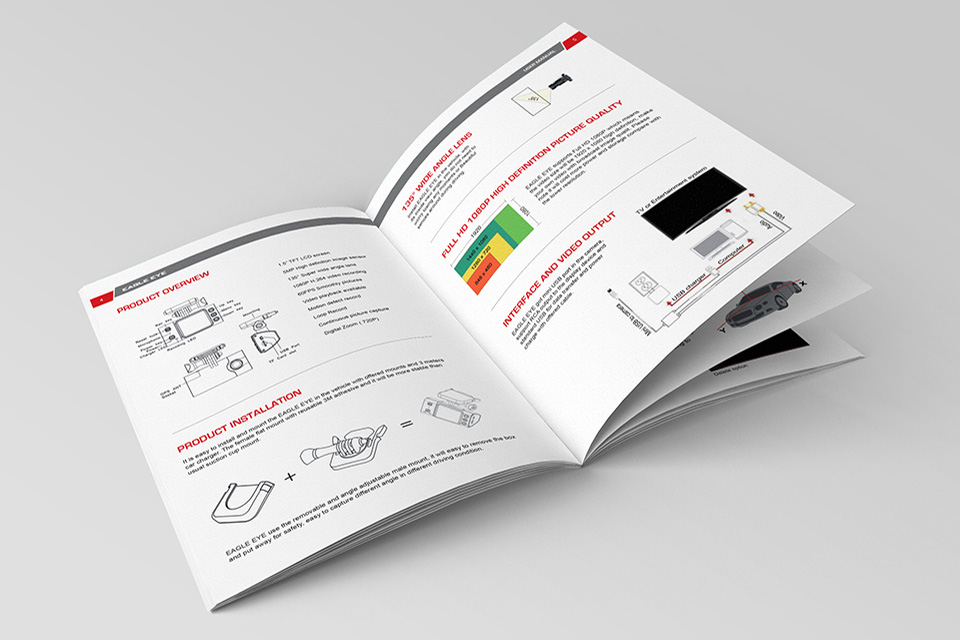Gone are the days of bulky printed manuals; now, users turn to the internet for quick and accessible guidance. However, the effectiveness of these manuals heavily relies on their ability to convey information efficiently. This is where the integration of visuals and multimedia becomes paramount, revolutionizing the user experience and enhancing comprehension.
The Rise of Visual Content
Visual content has become increasingly prevalent in online instruction manuals, and for good reason. Humans are visual learners, processing images faster and retaining information better when paired with visuals. Therefore, incorporating images, diagrams, and illustrations into manuals can significantly enhance comprehension and retention.
In a study conducted by the Nielsen Norman Group, researchers found that users spend more time looking at images than reading text on web pages. This highlights the importance of visual elements in capturing users' attention and guiding them through complex instructions. By supplementing textual information with visuals, manuals become more accessible to a wider audience, including those with varying literacy levels or language barriers.
Interactive Multimedia: Engaging the User
In addition to static images, interactive multimedia elements such as videos, animations, and simulations are transforming online instruction manual into immersive learning experiences. These dynamic tools allow users to engage with the content actively, fostering better understanding and retention.

Videos, in particular, offer a step-by-step demonstration of procedures, making complex tasks more manageable. Whether it's assembling furniture or troubleshooting technical issues, visualizing the process through video guides can alleviate confusion and frustration for users. Furthermore, animations and simulations can simulate real-world scenarios, allowing users to practice tasks in a risk-free environment before applying them in reality.
Accessibility and Inclusivity
One of the key advantages of incorporating visuals and multimedia into online instruction manuals is the improved accessibility and inclusivity they offer. Unlike text-heavy manuals, which may pose challenges for individuals with learning disabilities or visual impairments, visual content can be easily adapted to accommodate diverse needs.
For instance, screen readers can interpret alternative text descriptions of images, allowing visually impaired users to access visual content effectively. Likewise, sign language interpretation can be integrated into video guides, ensuring accessibility for the hearing impaired. By prioritizing inclusivity, manufacturers and content creators can empower all users to engage with their products confidently.
Streamlining User Experience
Visuals and multimedia not only enhance comprehension but also streamline the user experience by providing intuitive navigation and context-sensitive guidance. Interactive elements such as clickable hotspots or tooltips can offer on-demand explanations without overwhelming users with excessive text.
Furthermore, multimedia presentations can adapt to users' preferences and learning styles, allowing them to explore content at their own pace. Whether users prefer a visual walkthrough, a detailed explanation, or a combination of both, customizable options ensure a personalized learning experience tailored to individual needs.

Challenges and Considerations
While the benefits of visual and multimedia integration in online Manuel D'utilisateur are undeniable, several challenges and considerations must be addressed. First and foremost is the need for compatibility across devices and platforms. Manuals should be accessible on various devices, including smartphones, tablets, and desktops, without compromising usability or visual quality.
Additionally, content creators must ensure that visuals and multimedia elements complement textual information rather than overshadowing it. Striking the right balance between text and visuals is crucial to prevent information overload or confusion among users.
Furthermore, localization is essential to cater to global audiences effectively. Translating textual content is relatively straightforward, but adapting visual and multimedia elements to different cultural contexts requires careful consideration to avoid misinterpretation or cultural insensitivity.
Conclusion
In conclusion, the integration of visuals and multimedia in online instruction manuals has revolutionized the way users engage with product information. By leveraging visual content and interactive multimedia, manuals can enhance comprehension, accessibility, and user experience. However, it's essential to address challenges such as compatibility, content balance, and localization to ensure that manuals remain effective and inclusive across diverse audiences. As technology continues to evolve, so too will the potential for visual and multimedia elements to enhance online instruction manuals, empowering users to master tasks with confidence and ease.








